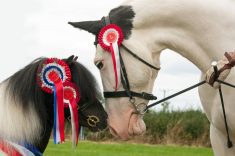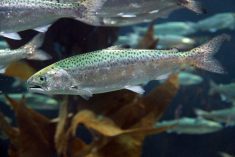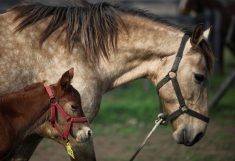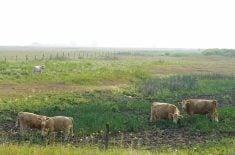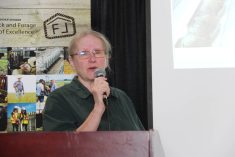With the evolution of livestock management practice such as bale grazing over the winter, more feed is being stored in the field where it is highly vulnerable to wildlife.
“With winter feeding being one of the larger costs of any cow-calf operation, we definitely don’t want to be sharing it with the wildlife,” said Elizabeth Nernberg, a livestock extension specialist with Manitoba Agriculture, Food and Rural Development (MAFRD).
Nernberg has been exploring the validity of “3D fencing” through a pilot project to see if it may be an option for producers to aid in keeping wildlife away.
Read Also
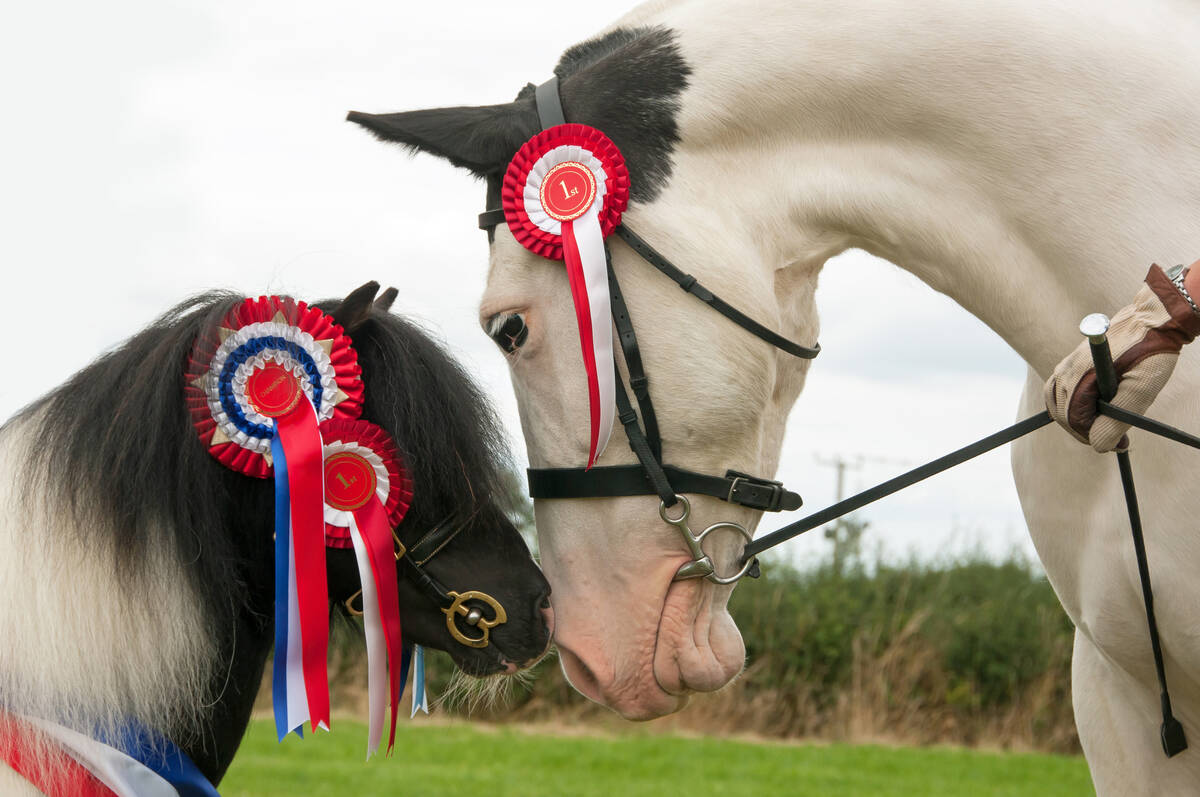
Linebreeding horses drives genetic bottlenecks
Too much linebreeding and prioritizing pedigree can narrow genetic diversity and lead to horse health problems in future generations.
The concept behind 3D fencing is having two parallel fences that provide height, depth and width. This makes deer and elk hesitate before trying to jump the fence, especially because they have poor depth perception because their eyes are on the side of their head.
“3D fencing does have the opportunity to limit wildlife and livestock interaction and keep wildlife out of feed yards. That being said, it needs to be properly designed and we are still trying to figure out the best design,” said Nernberg.
Nernberg has been conducting a 3D fencing pilot project on a 70-acre alfalfa field that is being used as a bale-grazing site. The fencing was installed at the site last fall, along with four trail cameras to monitor wildlife activity.

“Initially the fence was deterring the wildlife away. Upon closer examination we have seen some issues,” Nernberg said. “The wildlife will find the weak points, which we found to be the gates and areas where the wires may cross.
“From what I have seen, it seems like the 3D fence is more of a barrier for the elk. The deer seem to be a less cautious and will go through or between,” Nernberg said.
MAFRD has collaborated on the project with the Peace River Forage Association in British Columbia. The group has been working with 3D fencing for several years and has developed different designs and conducted a number of on-farm projects.
Hot wire reinforcement
The intent of 3D fencing is to create an effective visual barrier and capitalize on the animal’s poor depth perception.
“As wildlife approach the 3D fences they may be more careful, more cautious,” said Nernberg. “And, with the fences also being electrified, if they are curious they will get a shock that reinforces the danger of the visual barrier.”
Previous trials found a three-foot space between the fences to be the most effective.
“In our trial the interior fence has the three wires, 18 to 20 inches off of the ground for the bottom wire, 35 to 40 inches for the middle wire and 54 to 60 inches for the top wire,” said Nernberg.
Nernberg says a 3D fence can be quite a bit cheaper than traditional barrier fences, which are generally eight to nine feet tall with woven wire,
“3D fencing is estimated at $1 per linear foot, when you add labour and equipment you are probably closer to $1.75 to $2 a foot. Traditional barrier fences, with the materials alone you are looking at $6 per linear foot and I think that with equipment and labour you are probably pushing $11 to $12 a foot.”
Initial findings from the study show 3D fences to be about 75 per cent effective compared to 90-plus per cent effectiveness with the traditional barriers.
Nernberg notes that any producer who has built an electric fence could put this on their own farm but warns producers to keep in mind snow depth and that fence heights may need to be altered for the winter.
“Some producers have tried ABS hollow pipes that went over smaller-diameter posts where the sleeves could be raised as the snow depth increases,” Nernberg said.
MAFRD will continue to run the 3D fencing pilot project through the winter and into spring.




